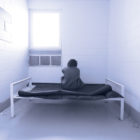Searching in Darkness for Answers to Juvenile Detention
|
I was at the diversion center in Athens a few weeks ago talking with some of the residents about communication skills. We usually start with a general discussion, talking about our lives and struggles since the last time we met. In many ways their experience is similar to being in prison, and about half of them have been imprisoned sometime during their lives. One of the guys asked me what I thought needed to happen in prisons. This is a subject close to my heart, and I talked about it for a bit, but then I stopped and said to them, “You can’t fix prisons.”
I have been thinking about my statement since then, and about how it applies to larger systems. There are, in fact, a lot of things that can’t be fixed, not because efforts at reform are ineffective, but because the basic concept is flawed.







